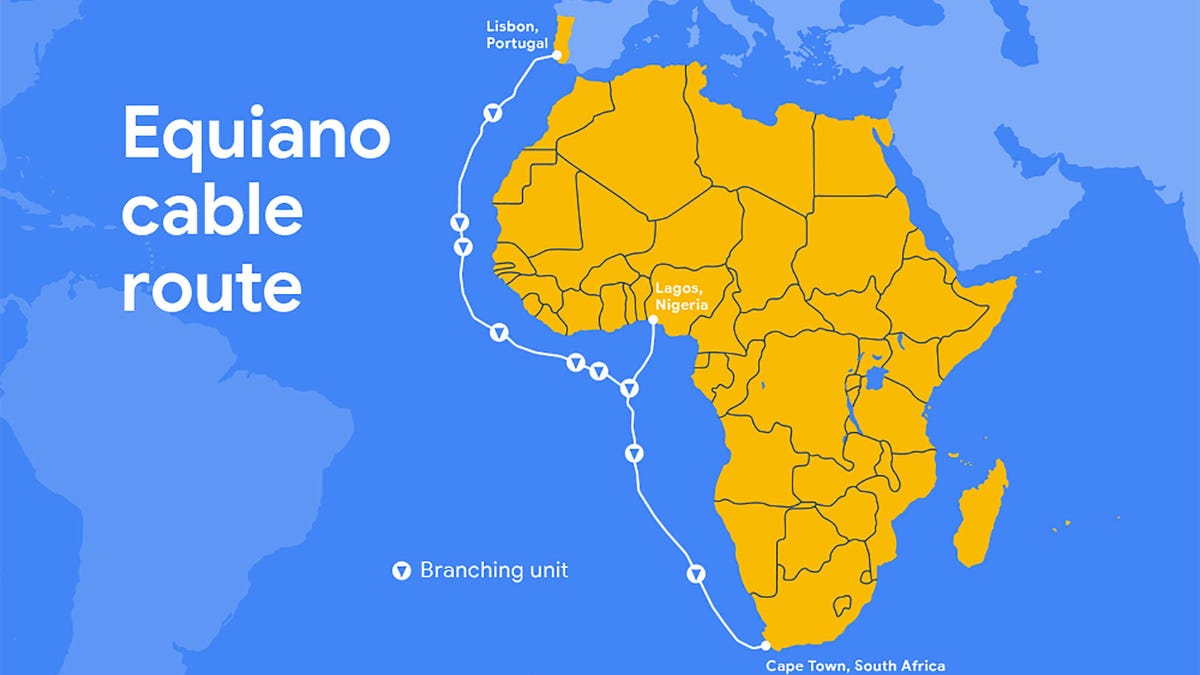Google's third subsea cable will pump data from Portugal to South Africa
And eventually Nigeria. The cable is named Equiano, after an enslaved Nigerian writer who bought his own freedom, and uses a new technology called fiber-level switching.

Google's Equiano subsea cable will connect Portugal, South Africa, Nigeria and likely other nations.
Google's third undersea network cable will shuttle high-speed data from Portugal to South Africa and countries in between starting in 2021, a fiber-optic line called Equiano. The fiber-optic line is part of Google's massive investment in computing infrastructure -- an investment that reached $47 billion over the last three years, Google said in a blog post Friday.
Google, a digital colossus, needs to push immense quantities of information among its data centers scattered all around the world. And with operations like Google Cloud, Google handles the data needs for many other companies, too.
The Equiano subsea cable is the 14th such project Google invested in and the third it owns outright. Cables it owns or partially owns are shown here in green; blue cables are ones Google has rights to use.
Equiano, the latest member of Google's alphabetically ascending sequence of cables, is named for Olaudah Equiano, an African writer and abolitionist, who was sold into slavery but bought his own freedom. He was born in Nigeria, which likely will be the first country to get an extension from the new subsea cable.
Google has an ownership stake in 14 subsea cable projects, but Equiano is the third Google-owned subsea cable. The two earlier ones are Curie, stretching from Los Angeles to Chile and Dunant from the eastern United States to France.
The cable uses a new data-pumping technique, called fiber-level switching, designed to transfer information more economically, Google said. Earlier long-range fiber-optic cables, with four or six pairs of fiber-optic lines, divided data by sending different wavelengths of light -- colors -- to each destination. Each fiber-optic pair can transfer data on 60 different wavelength channels.
Google's fiber-level switching uses 12 pairs or more of fiber-optic lines and devotes entire pairs to each destination. "This fiber-level switching results in a more compact, cost-effective and power-effective switching solution," Google said.
Google estimates it'll be able to transfer 12 terabits of data per second for each fiber on the Equiano cable. That's about 1,200 times the maximum speed of newer PCs, but undersea cables and other long-range fiber-optic lines typically send a continuous stream of data instead of the short bursts that most computers and phones need.
Dunant introduced the technology needed to pack lots of fiber pairs into the cable, but Equiano is the first cable to use the fiber-level switching, Google said.
Google in the past has invested in consortia that lay cables and secured rights to use others' cables. Building its own speeds the process, though, in part because having a single owner simplifies decisions and discussions. Google's undersea fiber-optic cables are designed to last 25 years.
Alcatel Submarine Networks is installing the cable for Google.
Alcatel Submarine Networks installs Google's Equiano undersea cable.
Originally published June 28, 5 a.m. PT.
Update, 11:37 a.m.: Adds further detail about the undersea cable's technology.

